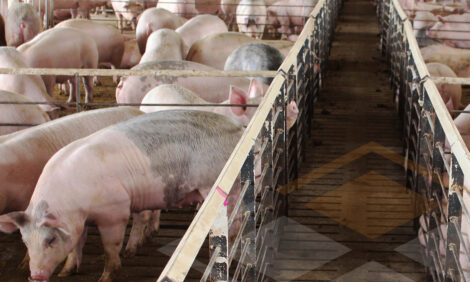



Epidemiology of Clostridium Perfringens Type A on Ontario Swine Farms
In what they believe to be the first study on the epidemiology of Clostridium perfringens in the pig population, researchers at the University of Guelph have provided baseline data from healthy pigs at different stages of production as well as in the manure pits. If C. perfringens type A is confirmed to be involved in neonatal enteritis, they report, the strain(s) responsible might not be identifiable using existing methods.There is poor understanding of most aspects of Clostridium perfringens type A as a possible cause of neonatal diarrhoea in piglets, and the prevalence and types of C. perfringens present on Ontario swine farms is unknown.
In a paper published recently in BMC Veterinary Research, Gloria Chan and colleagues at the University of Guelph in Canada report their study into the prevalence of faecal C. perfringens and selected toxin genes. They visited 48 Ontario swine farms between August 2010 and May 2011, and collected 354 faecal samples from suckling pigs, lactating sows, weanling pigs, grower-finisher pigs and gestating sows, as well as from manure pits.
The faecal samples were cultured quantitatively, and toxin genes were detected by real-time multiplex polymerase chain reaction (PCR).
In mixed multivariable linear analysis, log10 C. perfringens in faecal samples from suckling pigs were higher than that of weanling pigs, grower-finisher pigs and manure pit samples (P<0.05).
In mixed multivariable logistic analysis, the C. perfringens isolates recovered from lactating sows (OR=0.069, P<0.001), gestating sows (OR=0.020, P<0.001), grower-finishers (OR=0.017, P<0.001) and manure pits (OR=0.11, P<0.001) were less likely to be positive for the consensus beta2 toxin gene cpb2 than isolates from suckling pigs.
The prevalence of cpb2 in the isolates recovered from weaners did not differ significantly from suckling pigs.
C. perfringens isolates that were positive for cpb2 were more likely to carry the atypical cpb2 gene (atyp-cpb2) (OR=19, P<0.001) than isolates that were negative for cpb2. Multivariable analysis did not identify farm factors affecting the presence of consensus cpb2 and atyp-cpb2 genes.
This study provides baseline data on the prevalence of C. perfringens and associated toxin genes in healthy pigs at different stages of production on Ontario swine farms, concluded the Guelph-based researchers. They added the study suggests that if C. perfringens type A are involved in neonatal enteritis, there may be strains with specific characteristics that cannot be identified by the existing genotyping system.
Reference
Chan G., V. Farzan, G. Soltes, V. Nicholson, Y. Pei, R. Friendship and J. Prescott. 2012. The epidemiology of Clostridium perfringens type A on Ontario swine farms, with special reference to cpb2-positive isolates. BMC Veterinary Research, 8:156. doi:10.1186/1746-6148-8-156
Further ReadingYou can view the full report (as a provisional PDF) by clicking here.Find out more about clsotridial diseases in pigs by clicking here. |
September 2012






